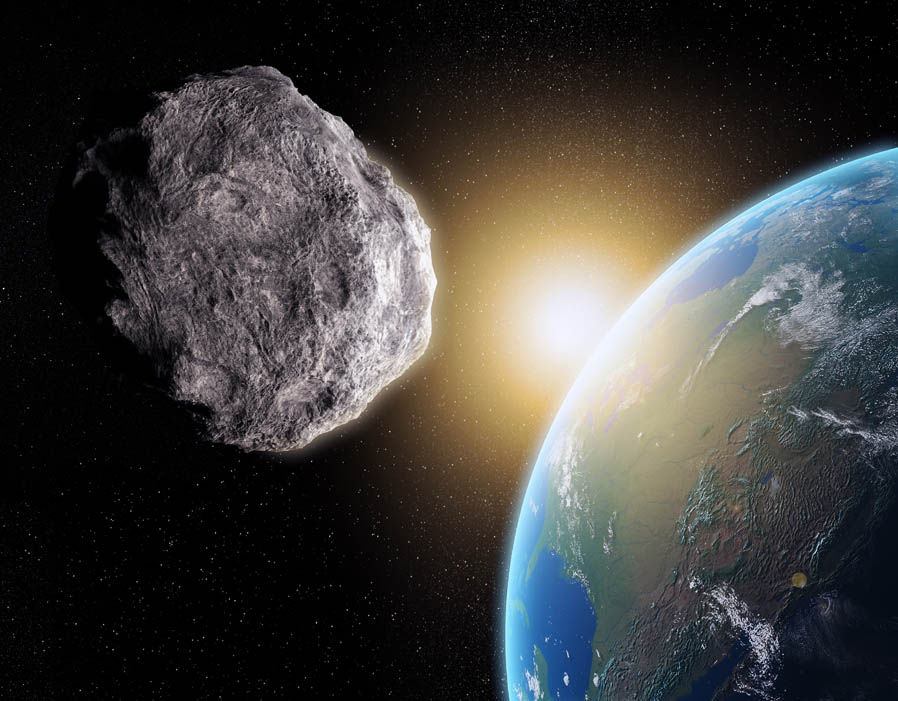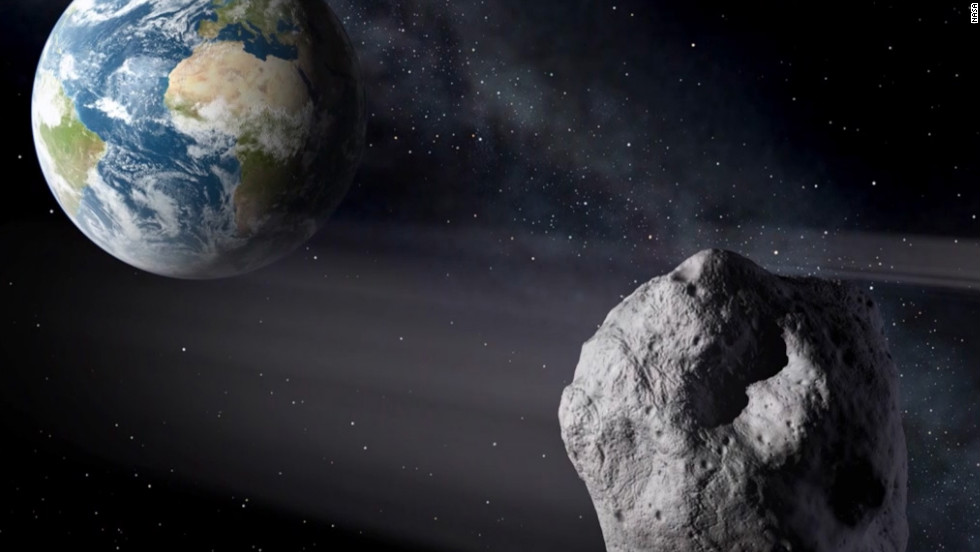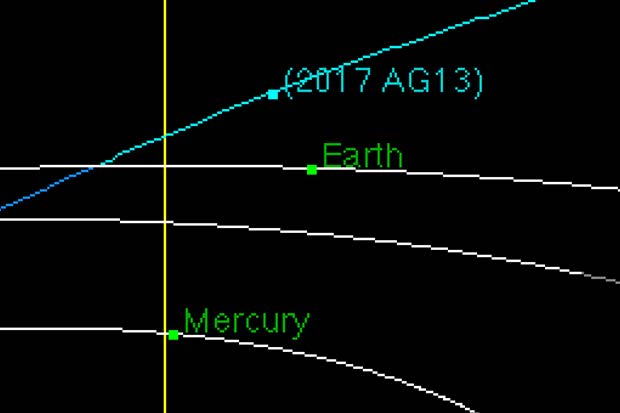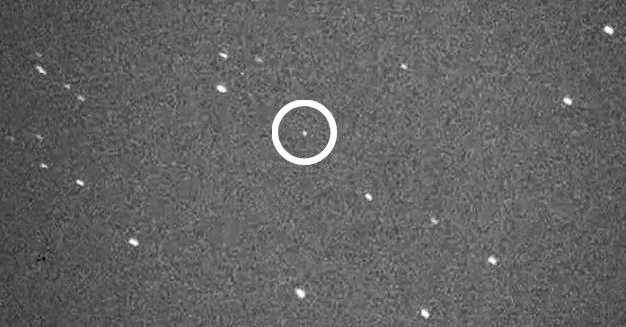An asteroid flying near the Earth, discovered only two days ago

A relatively small asteroid flew past Earth on January 9th. Scientists were able to detect this object just a couple of days before approaching, since its size is not so large. The catalog number of the asteroid is 2017 AG13, it passed at a distance of 385,000 kilometers from our planet.
The diameter of the asteroid, according to experts from Cambridge, ranges from 11 to 34 meters. That is, its size is comparable to the size of a celestial body that fell near Chelyabinsk in February 2013. Let me remind you, then, as a result of the fall of a celestial body to Earth, about 1000 people were injured (mostly, people were damaged due to the broken window glass in the explosion area).
Object 2017 AG13 was opened by experts at the University of Arizona. Initial observations have shown that one revolution around the Sun takes him 347 days. Its orbit is an ellipse, much more elongated than that of the Earth: the minimum distance when approaching the Sun from an asteroid is 0.55 AU, and the maximum distance is almost three times as large, 1.36 AU. Similar parameters of the Earth's orbit are 0.98 AU. and 1.02 AU
')
Despite the fact that the passage of this asteroid can be called a surprise (and not to say that it is especially pleasant), one should not be surprised at this event. The fact is that the neighbors of the Earth are millions of asteroids. 15,000 of them are in close proximity. And scientists can detect so far only the largest celestial bodies capable of threatening the Earth and its inhabitants. As for the celestial bodies with the size of 2017 AG13 and less, their astronomers immediately find out when approaching the Earth, as was the case in this case.

Experts say that sooner or later a large asteroid will fall to Earth, there is no doubt. The only question is whether we can detect a dangerous celestial body before it gets close to Earth at a dangerous distance, when nothing can be done. Now experts are studying asteroids that can threaten the Earth, and the program of monitoring our dangerous neighbors is moving fast enough. In addition, several detection systems are currently operating at once, one of which, Scout , was launched only at the end of last year.
This is an analytical computer program that constantly analyzes data from telescopes for the detection of objects in near-Earth space (Near-Earth Objects). If a similar object is detected, the system evaluates the threat. To provide this software platform with information, NASA has to rent a network around the world with a telescope that conduct regular monitoring of the night sky. And no less regularly open all new and new objects.
"NASA finds at least five new asteroids every night," one program representative said . Assessing the degree of threat to each object is no less important than the detection of asteroids. In some cases, as with the asteroid, which was discussed above, the early warning does not work - small objects can approach the Earth in 1-2 days, or even a few hours after detection.

The passage of 2017 AG13 near the Earth
“When a telescope finds a moving object, it almost always looks like a point moving across the sky. You have no information on how far such a celestial body is. And the more telescopes are aimed at it, the more data you get about the size of the celestial body and where it flies. Sometimes finding out all this information takes a lot of time, ”says astronomer Paul Chodas from JPL (Jet Propulsion Laboratory).
Scout is a system that works with large objects that may threaten the Earth in the near future. According to experts, the main task of this project is to detect at least 90% of large asteroids with a diameter of 140 meters and more. Now found and cataloged no more than 25-30% of such objects.
In the near future, another telescope, which is currently under construction in Chile, should join the program for detecting celestial bodies dangerous for the Earth. This is the Large Synoptic Survey Telescope , whose main task will be to search and catalog dangerous celestial bodies for the planet. By the way, implementing programs to protect the Earth from asteroids began not so long ago - only about 10 years ago. It was then that not only scientists, but also public officials realized that asteroids are indeed a significant threat that must be considered.
Search for dangerous objects involved and private organizations. Their representatives believe that they can significantly speed up the process of counting asteroids, which may pose a threat to civilization. “I hope that in the next 10-15 years we will be able to eliminate the asteroid threat to humanity,” said Ed Lou, the head of the B612 organization, which deals with the threat of earth from space by various celestial bodies.

Photo of October 10, 2012. Gianluca Masi, Virtual Telescope Project.
By the way, experts back in 2015 warned about the imminent approach of a celestial body in size from 12 to 40 meters with the Earth. For the first time, data on this object, the asteroid 2012 TC4, was obtained in 2012, when it was last held near the Earth. Then the convergence was about 94,800 km. In October, he again has to pass near the planet, there is a completely non-zero probability that the asteroid will fall to Earth.
The problem is that this celestial body is not very large, plus everything else, its albedo is unknown. In case it is a rocky object, it will burn in the atmosphere without any consequences for the Earth. If it is iron-nickel, then the asteroid will fall, leaving the crater in place of the fall. It is clear that if the fall occurs in a densely populated place, there may be damage and casualties.
Source: https://habr.com/ru/post/400501/
All Articles